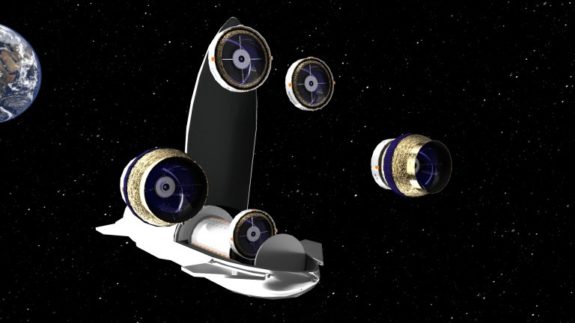At the Astronomy and Astrophysics Department colloquium’s Radical Hypothesis Lecture, Daniel Apai spoke about the Nautilus project, an idea that seeks to redefine and improve space observation.
Humanity has turned towards the stars. Their mysteriousness and incredible distance endlessly fascinate us. And one thought always comes to mind: are there others like us out there? However, our search for life in the universe is far from a simple one. On Wednesday, during the Astronomy and Astrophysics Department colloquium, University of Arizona professor and researcher Daniel Apai was invited to speak at the annual Crotts lecture. The lecture, in honor of famed creative Columbia astrophysicist Arlin P.S. Crotts, is also known as the Radical Hypothesis Lecture and encourages the spread of imaginative and innovative ideas in the field.
With our current level of technology, we have no way of detecting advanced lifeforms, and even detecting biosignatures directly is impossible. What is achievable is probing alien atmospheres through spectroscopy in order to glean details about their compositions. We can analyze these results in order to draw conclusions about the possibility of life. Unfortunately, although the method is sound, there is still another issue: we don’t have enough power. The recently launched James Webb Space Telescope (JWST) has a primary mirror diameter of about 25 square meters, and the Hubble Space Telescope is even smaller. This heavily complicates the process of exoplanet detection and identification. In fact, recent funding allocated to exoplanet studies has a goal of analyzing and characterizing 25 different exoplanets.
Only 25? Missions such as NASA’s Kepler have identified thousands of individual planets in our night sky, so it seems as though the number that we can characterize should be equally massive. Well, that might not actually be that much of a surprise. There are countless parameters (some of which are immeasurable) that must combine to form life and building telescopes such as the JWST is incredibly expensive and prone to failure.
But Dr. Apai believes that there is a way forward. The first issue that must be addressed is the cost, and one company may already have the solution. SpaceX’s Starship rocket is in development and has been undergoing testing for some time. Due to its fully reusable nature and efficiency, it could reduce the cost of moving cargo to space to $200 per kilogram—by far the lowest ever. With knowledge of this development, Dr. Apai and his colleagues began formulating the Nautilus project. Named after the famous submarine from Jules Verne’s fictional works, the project aims to launch an entire fleet of telescopes with the ability to characterize 1000 different exoplanets using SpaceX technology—and all of this within the cost of a flagship mission. There is one last problem, however. How can a mirror with enough power be built?
To tackle this, Dr. Apai teamed up with various optical scientists and engineers. Since the cost of a telescope’s mirror increases exponentially with diameter, conventional techniques are impossible to use. The team has successfully developed a new type of mirror technology known as MODE (multi-order diffractive engineered) lenses. These new lenses use segmented optical elements in order to focus light much more efficiently than traditional methods allow. They also scale far better, in theory allowing for a 50 square meter telescope mirror to be constructed. It is planned to be over 100 times lighter than traditional mirrors, much less sensitive to misalignments, and capable of being produced and manipulated on large scales. Although this area of the Nautilus project is not quite yet fully fledged, countless scientists from other projects are also working with these lenses, so the technology to likely to improve at a brisk pace.

So what will the end result look like? Although only the concept exists right now, the group is confident that the Nautilus project is the future of space observation. Currently, the plan is to use the SpaceX Starship rocket to deliver 35 separate telescopes into orbit. Once in orbit, the telescopes will use inflatable technology to deploy their sun shields and correct their instruments. Ideally, these telescopes will be capable of operating separately in order to survey the universe at large, or aim as a group toward a specific target. In the end, it is too early to draw many conclusions about the fate of the project, but the several papers that have already been published paint a promising picture. Although more tests with the MODE lenses will have to be conducted and equipment to mass-produce them built, Dr. Apai claims that we have reached a “convergence point.” New advancements in launch capabilities, as well as many in optical technologies, are combining to give us the ability to view our universe better than ever before and give us even more questions to ponder in the process.

Header via Project Nautilus
Images via Project Nautilus


 0 Comments
0 Comments